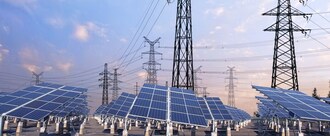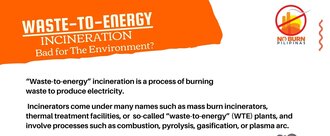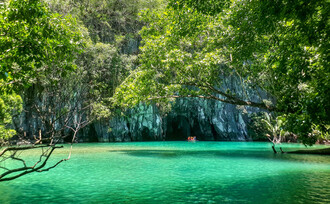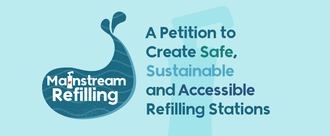-
For the Future of Bais City, Manjuyod, and Tañon Strait — Support the Filing of a Writ of KalikasanFor generations, the rivers and coasts of Bais City and Manjuyod have given life to our people—from fisherfolk who rise before dawn to families who depend on clean water for food and health. These same waters flow into the Tañon Strait Protected Seascape, home to dolphins, coral reefs, and the famous Manjuyod Sandbar that draws visitors and supports local tourism and employment. Today, that lifeline is threatened. The recent wastewater contamination has clouded not only our seas but also our sense of safety and trust. Fisherfolk worry about their catch; workers and small business owners fear for tourism’s future. Communities along the coast ask, "Will visitors still come if our waters are unsafe?" Filing a Writ of Kalikasan is our way to act—responsibly and lawfully—to protect both nature and livelihood. This is not about blame but about truth, accountability, and recovery. By standing together, we defend not just our seas but also the dignity and future of the people who depend on them.576 of 600 SignaturesCreated by Lloyd Dionson
-
SUPPORT INITAO - SAY NO to the Oil Depot and Pier Project.The importance of protecting areas like Initao from the development of industrial facilities such as an oil depot and pier can be understood from several critical perspectives: 1. Environmental Protection: The establishment of industrial sites, especially those related to fossil fuels, poses significant risks to local ecosystems. These risks include oil spills, air and water pollution, and habitat destruction, all of which can have devastating effects on wildlife and plant life. Preserving the natural habitats in Initao helps maintain biodiversity, which is essential for ecological balance and the health of the planet. 2. Marine Life Conservation: Coastal and marine ecosystems are some of the most productive and biologically diverse areas on Earth. Protecting these areas ensures the survival of numerous marine species, some of which may be endemic or threatened. Marine conservation efforts help sustain fish populations, protect coral reefs, and maintain the overall health of the oceans. 3. Sustainable Tourism: Initao's identity and economy are closely tied to its natural beauty and resources, which attract tourists seeking white sand beaches and unspoiled nature. Sustainable tourism can provide long-term economic benefits without degrading the environment, while industrialization could deter visitors, negatively impacting local businesses and livelihoods. 4. Community Health and Safety: Industrial facilities, particularly those dealing with oil, can be hazardous to nearby residents due to the potential for accidents, explosions, and exposure to toxic substances. Protecting the community from these risks is paramount to ensuring public health and safety. 5. Cultural and Heritage Preservation: Natural landscapes often hold cultural significance for local communities and indigenous peoples. Preserving these areas maintains the cultural heritage and allows future generations to experience and appreciate their ancestral lands. 6. Climate Change Mitigation: The protection of forests and seas plays a crucial role in mitigating climate change by sequestering carbon dioxide and serving as carbon sinks. Development that leads to deforestation or destruction of marine habitats can exacerbate climate change impacts. 7. Legacy for Future Generations: Preserving natural and unspoiled environments ensures that future generations can enjoy and benefit from them, just as present generations have. It is about leaving a legacy that values the long-term health of the planet over short-term industrial gains. In summary, opposing the development of the oil depot and pier in Initao is about safeguarding the environment, ensuring the well-being of the community, preserving the local economy, and maintaining a commitment to future generations. It is about choosing a path of sustainable development that respects the delicate balance between human activity and the natural world.174 of 200 SignaturesCreated by Muhammad Adel Roa
-
HCWH's Position Statement on the proposed bill establishing waste-to-energy technologiesThere is an urgent need for the health sector to rise up and support the fight against false solutions to plastic pollution. Global waste generation is set to double from 2015 to 2025, reaching over 6 million tonnes per day, with a projected increase to 11 million tonnes per day by the next century. In the Philippines, 362,000 metric tons of waste and 280 metric tons of medical waste are generated annually, posing challenges for proper waste management and segregation. Focusing on sustainable alternatives over disposal can reshape consumption habits and lead to better waste reduction outcomes. The Philippine Clean Air Act of 1999 clearly indicates the rights of Filipinos, including the right to breathe clean air, the right to utilize and enjoy all natural resources according to the principle of sustainable development, and the right to be informed of the nature and extent of the potential hazards of any activity. Incineration, also known as waste-to-energy, thermal treatment, energy-from-waste, and energy recovery, is not an effective solution to the waste management challenges and plastic pollution crisis. Beyond the health impacts and environmental degradation, false solutions, including WTE technology, do not effectively address waste disposal challenges and energy generation. Health Care Without Harm Southeast Asia, therefore, states our opposition to this bill. We are deeply concerned about the potential health and environmental risks associated with reintroducing incineration technologies, such as waste-to-energy facilities, for dealing with municipal waste, including medical and infectious waste. We urge for preventive measures to be taken, a just transition to be provided, and a precautionary approach to be supported in waste management.9 of 100 SignaturesCreated by Health Care Without Harm Southeast Asia

-
President BBM: Pagbayarin ang mga kumpanyang responsable sa MT Princess Empress Oil SpillAng oil spill mula sa paglubog ng MT Princess Empress ay isa na sa pinakamalalawak na oil spill sa kasaysayan ng Pilipinas. Umabot na ang langis sa pampang ng iba’t ibang probinsya, mula Oriental Mindoro hanggang Palawan. Namataan na rin ito sa Verde Island Passage, isang bahagi ng katubigan na mayaman sa marine biodiversity. Nananatili rin itong banta sa mga tanyag na tourism spots gaya ng Boracay at Puerto Galera. Sa loob lamang ng ilang linggo, libu-libong pamilya at mangingisda na ang dumaraing dahil sa insidenteng ito. Lampas 19,000 mangingisda na ang nawalan ng kabuhayan, mahigit isandaang residente na ang nagkakasakit, at nangangamatay na ang mga isda sa Oriental Mindoro at sa mga karatig-probinsya. Ngunit hanggang ngayon, ni isang kusing ay wala pang binabayad ang mga kumpanyang dawit sa sakunang ito. Maging ang charterer ng barko ay hindi pa rin lumalantad. Ang gastusin sa pagbangon ay dapat sagutin ng mga kumpanyang may sala — hindi ng gobyerno lamang o ng mga komunidad na mismong naaapektuhan ng kanilang mapaminsalang negosyo.506 of 600 SignaturesCreated by Greenpeace Philippines

-
Commit the Philippines to Investing in Clean Renewable EnergyThe repercussions of climate change are already being felt in the twenty-first century. Droughts, more intense and frequent storms, rising sea levels, and higher temperatures are all having a negative impact on the planet's natural food webs and ecosystems. It is more important than ever to persuade people to abandon fossil fuels, which emit greenhouse gases into the atmosphere, and instead invest in renewable energy.167 of 200 SignaturesCreated by Ryanna Skye Cabrera
-
No to WTE incineration in Davao! Go for genuine zero waste solutions!1.) WTE incineration is known to cause health and environmental problems to surrounding communities. Burning municipal waste produces pollutants that persist in waterways, air, and surrounding farms for decades. The process creates dioxins and furans which are known to cause respiratory and reproductive diseases, birth defects, and cancer. WTE will not only harm the already marginalized low-income agricultural communities in Barangay Biao Escuela and surrounding barangays in District 1 and 3 of Davao City; its toxic by-products may reach our plates through the food chain. The proposed WTE site in Davao is located just 2.2 km from the elementary school, and 550m from a relocation site. Its impacts may also reach those living within and beyond the 10-km radius of the facility. Our fate may become similar to several cases of pollutant exposure in several parts of the world. For example, people in an urban area hosting two waste incinerators in Italy were found to have higher concentrations of metals barium, manganese, copper, and vanadium that have accumulated in their bodies (Di Ciaula et al., 2020). In Japan, children studying in schools near municipal waste incineration plants were reported to have experienced wheezing, headache, stomach ache, and fatigue (Miyake et al., 2005). Locally hired workers may also be exposed to toxins like those incineration plant workers in Shenzhen, China who were found to have high levels of phthalates and bisphenols (Lu et al., 2020). 2.) WTE worsens the climate crisis. Burning of waste releases greenhouse gas emissions. Even the European Union is defunding WTE incinerators with the realization that such facilities do not contribute to climate action. WTE also cannot be considered renewable energy because the feedstock will come from plastic waste, which are products of fossil fuel extraction. 3.) WTE is expensive, yet produces minimal energy compared to genuine renewable energy resources. Instead of reducing waste at source, it encourages production of more waste in order to feed the facility. The proposed WTE project of Davao City requires a minimum of 600 tons. At 30% residuals, Davao City wastes are only 180 tons per day: a shortfall of 420 tons. This produces minimal energy despite capital expenses reaching Php 5 billion. This will cause a huge drain on the city’s finances because of compensation obligations to the special purpose company. To make up for these arrangements, the public will shoulder the cost through payment of higher tipping fee. 4.) WTE threatens the job security of waste workers. WTE will displace workers in the formal and informal waste industry such as waste pickers, recyclers and haulers, as well as from the numerous companies and groups who upcycle, recycle and compost. 5.) WTE violates the Clean Air Act, Renewable Energy Act, and Ecological Solid Waste Management Act. The proposal also didn't undergo proper community consultation. As of writing, the project does not have an environmental compliance certificate (ECC), yet the land for the facility has already been bought by the city government of Davao. 6.) The Philippines has limited technical and financial capacity to regularly monitor emissions such as dioxin, furan, and other toxic WTE by-products. 7.) The technology proposed by Japanese contractor NSENGI is a grate stoker furnace-type, which is a relatively old waste treatment technology that is incapable of burning waste at a safe temperature. Solid by-products such as toxic ash cannot just be disposed in the municipal landfill since these are hazardous wastes. Thus, a new landfill will still be opened just for the hazardous ash from the incinerator. 8.) The establishment of WTE facilities will encourage Global North countries to dump their waste in the Philippines, a practice which still happens to this day. Davao can and should commit to genuine Zero Waste approaches and join the many other communities around the world who have committed and set Zero Waste targets. This can be done through supporting communities to properly implement the Ecological Solid Waste Management Act (RA 9003). For example, Barangay Potrero in Malabon was able to divert 80% of its solid waste from landfills through composting and recycling. This resulting in daily savings of Php 15,000 from hauling and tipping fees while generating 65 jobs. In the city of San Fernando, Pampanga, the implementation of Zero Waste has resulted to 80% waste diversion. They were also able to save Php 20 million in the process. We need not go far to find another model Zero Waste community. In Davao City's Purok Onse, Barangay Tacunan, the homeowners and the barangay, through the support of Sustainabe Davao Movement, were able to reduce the monthly volume of waste sent to the landfill by 3000 kgs, after only 7 months of implementing Zero Waste solutions such as scheduled collection of segregated waste, door-to-door collection of food waste, weekend recyclables deposit, and sari-sari store refilling stations. Still in Davao City, Barangay Mintal was able to divert an average of 2 tons of food waste per month and 6.7 tons of recyclables per month, through collecting segregated waste from food establishments and households, empowering resource collectors, and partnering with junk shops and a food upcycling company. The program also yields an average of Php 45,822 monthly income from sales of recyclable materials. We foresee that waste diversion will further improve if the LGU supports this kind of solid waste management program that is clearly safer, more productive, and more sustainable compared to incineration. These model communities in the Philippines show that Zero Waste is possible, without the polluting and costly presence of WTE incinerators.2,961 of 3,000 SignaturesCreated by No Burn Davao

-
Scrap Waste-to-Energy BillWaste incineration can not solve the waste management problem of the country neither it can provide clean, safe and affordable energy for electric consumers. The reality is opposite. It will only encourage generation of more waste because it will undermine the proper waste management practices such as reusing, repurposing and recycling. It also runs contrary to our aspirational goal of keeping the temperature rise of climate to 1.5 degrees because waste incineration especially plastic waste produces significant greenhouse gas emissions. Finally, it will only convert ordinary wastes to poisonous residues and fumes and persistent organic pollutants including dioxins and furans enough to cause serious health problems such as cancers and will affect future generations.855 of 1,000 SignaturesCreated by Green Thumb Coalition

-
STOP AND INVESTIGATE DUMPING OF CRUSHED DOLOMITE IN MANILA BAYIn defiance of the Supreme Court MMDA Ruling (https://lawphil.net/judjuris/juri2008/dec2008/gr_171947_2008.html) and even Administrative Order No. 16, (2019) ‘Expediting The Rehabilitation And Restoration Of The Coastal And Marine Ecosystem Of The Manila Bay And Creating The Manila Bay Task Force’, this ill-conceived project violates at least five laws that impact heavily on our fisheries, biodiversity, and marine habitats,: 1. Environmental Impact System Laws and regulations No person may undertake environmentally critical projects or any project in environmentally critical areas without an environmental compliance certificate. Major reclamation projects and resource extractive industries such as major mining and quarrying projects are environmentally critical projects. Presidential Proclamation No. 2146 includes the following as environmentally critical areas: *All areas declared by law as national parks, watershed reserves, wildlife preserves and sanctuaries *Areas which constitute the habitat for any endangered or threatened species of indigenous Philippine Wildlife (flora and fauna); *Areas of unique historic, archaeological, or scientific interests; and *Areas frequently visited and/or hard-hit by natural calamities geologic hazards, floods, typhoons, volcanic activity, etc. 2. The Fisheries Code (RA 8550) as amended by RA 10654 The Fisheries Code requires a detailed Environmental Impact Statement prior to undertaking projects which “will affect the quality of the environment.” (section 12) It also prohibits aquatic pollution defined as anything introduced to water bodies that can harm living and non-living marine resources or humans. 3. The Clean Water Act, RA 9275 The Clean Water Act prohibits depositing of any material into bodies of water or their margins that cause water pollution 4. The National Cultural Heritage Act of 2009, RA 10066 The National Historical Commission declared Manila Bay, from Del Pan Bridge to the Cultural Center of the Philippines, as a national historical landmark in 2012. The law prohibits alteration of its original features: Prohibited Acts. - To the extent that the offense is not punishable by a higher punishment under another provision of law, violations of this Act may be made by whoever intentionally: Xxx (b)Modifies, alters, or destroys the original features of or undertakes construction or real estate development in any national shrine, monument, landmark and other historic edifices and structures, declared, classified, and marked by the National Historical Institute as such, without the prior written permission from the Commission. This includes the designated security or buffer zone, extending five (5) meters from the visible perimeter of the monument or site. At the local level, the project proponent is also required to consult the local government unit. 5. The Local Government Code of 1991, RA 7160 National agencies planning or implementing projects, such as the Department of Environment, must consult the stakeholders of the local government unit, in this case, the City of Manila. The project cannot proceed without consultation with and prior approval of the Sangguniang Panglungsod of Manila. Likewise, New Civil Code of the Philippines, RA 386, declares that: *Article 5. Acts executed against the provisions of mandatory or prohibitory laws shall be void, except when the law itself authorizes their validity. (4a) *Article 7. Laws are repealed only by subsequent ones, and their violation or non-observance shall not be excused by disuse, or custom or practice to the contrary. When the courts declared a law to be inconsistent with the Constitution, the former shall be void and the latter shall govern. Administrative or executive acts, orders and regulations shall be valid only when they are not contrary to the laws or the Constitution. (5a) *Article 25. Thoughtless extravagance in expenses for pleasure or display during a period of acute public want or emergency may be stopped by order of the courts at the instance of any government or private charitable institution. Jurisprudence Aside from the laws, the MMDA, et al. v. Concerned Residents of Manila Bay Ruling directly applies in this case. Here, the Supreme Court noted that “the cleanup and/or restoration of the Manila Bay is only an aspect and the initial stage of the long-term solution. The preservation of the water quality of the bay after the rehabilitation process is as important as the cleaning phase.“ Because of this, the Court has put the heads of all concerned departments-agencies, bureaus and offices under them on continuing notice about, and to enjoin them to perform, their mandates and duties towards cleaning up the Manila Bay and preserving the quality of its water to the ideal level. Hence, the acts of DENR and DPWH as well as its bureaus in dumping dolomite rocks as ‘white sands’ which are in fact pollutants, are in direct contravention of their continuing and mandated duties in the said case. In addition, relying on Section 65 of RA 8550, as amended, the Department of Agriculture (DA) through the Bureau of Fisheries and Aquatic Resources (BFAR) was ordered by the Supreme Court to improve and restore the marine life of the Manila Bay in the said case.825 of 1,000 SignaturesCreated by Living Laudato Si' Philippines

-
Sign to ban the use of plastics and styrofoam in TaguigThe massive pollution and environmental effects of plastics need to be addressed in ALL the local government units in the Philippines. With our population of over 100M, the everyday use of plastics and styrofoam have led to devastating effects as they accumulate, clog and choke our waterways, cause deadly floodings, kill our marine animals, and pollute our rivers, lakes and seas. Because of these negative effects, hundreds of measures around the world have been taken since 2002— the year when the first national ban on plastic bags was enacted in Bangladesh— to reduce or regulate their use. So many other cities in Metro Manila and towns across the Philippines have progressed towards this movement. However the City of Taguig, still has not done anything and it is already 2019. (https://en.wikipedia.org/wiki/Phase-out_of_lightweight_plastic_bags) To date, these are the Metro Manila cities with bans or restrictions on plastics: Muntinlupa (Jan. 1, 2011) Las Piñas (Jan. 2, 2012) Pasig (Jan. 1, 2012) Quezon City (Sept. 1, 2012, P2.00 per bag) Pasay (Sept. 1, 2012, Bags for a fee) Makati (June 30, 2013) (https://hubpages.com/politics/List-of-Philippine-Cities-Where-Plastic-Ban-is-Implemented) We call on Mayor Lino Cayetano to address this issue and finally bring Taguig at par with all the other cities and towns that have implemented banning plastics, to play its role in protecting the environment by banning single-use plastics and styrofoam.237 of 300 SignaturesCreated by V J
-
OPPOSE COAL FIRED POWER PLANT IN PALAWAN (and the rest of the country)Palawan is an island that has prided itself in being the "World's Best Island", home of the UNESCO heritage sites: Tubbataha Reefs and the Puerto Princesa Subterranean National Park, not to mention its other local human and wildlife inhabitants that have benefited from the clean air, water and land from it being coal-free. Back in 2014, former president Aquino said that Palawan needs adequate energy to cater to the 10 million tourists projected for 2016. “A lot of these tourists will be going to Palawan. I am sure you are aware of all the developments that are happening here plus iyong airport, i-u-upgrade din natin. And all of that plus the upstream and downstream industries will need power. And if it’s not available, then practically we are saying, parang wala na rin iyong tourism na big industry dito or iyong growth, or projected growth." (see https://newsinfo.inquirer.net/606179/aquino-not-keen-on-coal-free-palawan) But growth at what expense? Would locals not prefer a future of clean air, clean water, clean land and thriving wildlife over throngs of tourists promising "growth and development"? And what then would tourists actually keep coming for if the island's health is compromised with an unsustainable coal plant and other unsustainable infrastructure built with a short-sighted goal in mind? But civil society movements and some LGUs have shown that we can resist this from happening. They realize that there's so much at stake, and so much we need to protect. (see https://businessmirror.com.ph/2018/08/05/lgus-going-green-rejecting-coal-projects/) Atty. Grizelda Mayo-Anda, who is one of the lead convenors of the civil society group Save Palawan Movement (SPM) said: “Kapag natayo ‘yan, magsisisihan na tayo sa impact. Ang hirap na nyan matanggal once that is set up. The basis that it is of national significance, with all due respect, is not sound because all they have to do is to look at the Palawan Island Power Development Plan (PIPDP). Coal is not a least cost option. Ang least cost option doon ay combination of mini hydro with diesel and bunker. We have enough power supply”. (see https://palawan-news.com/denr-gives-go-ahead-to-palawan-coal-plant/) Furthermore, the civil society group in Palawan, among others who oppose the building of new coal plants, has claimed that, apart from negating any advances we make in addressing climate change, coal power projects are dangerous to human health as it releases a number of airborne toxins and pollutants, among them mercury, lead, sulfur dioxide, nitrogen oxide, and other particulates.1,556 of 2,000 SignaturesCreated by Living Laudato Si Philippines

-
Mainstream RefillingA five-year waste audit by the Global Alliance for Incinerator Alternatives (GAIA) estimates the Philippines throws away 163 million sachets everyday. 79% of “branded” plastic waste comes from food packaging, 12% from household and 8% from personal care products. Plastics can remain for 2,000 years or longer in our natural environment. If we continue business as usual, by 2050 there could be more plastic than fish in the sea by weight. Because it is produced from petroleum-based chemicals, it could account for one-fifth of the world’s total oil consumption, further accelerating global warming and deadly climate change. Government policy can be a decisive driving force for widespread transformation. The FDA Philippines safeguards public health by ensuring the safety and efficacy of food, medicine, household and cosmetics products. With the support of key government agencies such as the Environmental Management Bureau and the Department of Trade and Industry, the FDA is in a unique and powerful position to influence and transform the usage of plastic at the source through the thousands of brands it regulates. We envision that the presence of safe, appropriately regulated cosmetics and home care refilling stations that are as accessible as water refilling stations will spark a radical change in the way people and organizations consume goods and manage plastic waste. An Illinois case study showed that a single mobile water refilling station saved the equivalent of 99,000 12-ounce plastic bottles a year. In order for this transformation to take place, we raise the following three opportunities to enhance the implementing rules and regulations of Republic Act No. 9711 - The Food and Drug Administration Act of 2009: FIRST: Instead of classifying refilling activities under “filling”, a manufacturing activity under AO 2016-0003 (Guidelines on the Unified Licensing Requirements and Procedures of the FDA) and Good Manufacturing Practices, we propose that a new, separate classification be developed such as “Refilling/Repacking Stations” within a retail outlet similar to how RONPD (Retail Outlets for Non-Prescription Drugs) were developed. SECOND: To fulfill the FDA requirement of protecting consumers’ health, we propose these Refilling/Repacking Station requirements: 1. Business permit 2. Sanitary permit 3. Products (cosmetics and household) for refilling must be FDA-notified 4. Authorized refilling representative trained and certified by the company to conduct safe and sanitary refilling (patterned after food establishments’ safety compliance officer) and not necessarily a pharmacist or a graduate of an allied science profession. 5. Refilling procedures to ensure the safety of refilling 6. Flat rate fee for the refilling License to Operate similar to government agencies such as Bureau of Animal Industry (BAI) and Philippine Drug Enforcement Agency (PDEA), and not based on business capital. THIRD: If the packaging to be used is the emptied product bottle, the minimum mandatory information is already in the label. The Batch No. and Expiration Date will be stamped on the label for every refill. If the packaging to be refilled will be different from the emptied product bottle, the existing minimum mandatory requirement should be displayed on the Refilling/Repacking Stations for the consumers’ information. We propose that the following be stamped/stickered on the label for every refill: 1. Product Name 2. Batch No. 3. Expiration Date 4. Special precautions to be observed (if applicable) With this proposal, we seek to bridge the policy gaps and promote a sea change in the way responsible Filipino companies and ordinary citizens use plastics - not just temporary measures, but permanent and lasting policies, structures and systems. We hope to prepare the way for more brands to become better stewards of our earth and of human health. Join our push for safe, sustainable, widely accessible refilling stations of daily household and cosmetics products! Read the full text of the petition at bit.ly/mainstreamrefilling-pdf Signed: Anna Oposa, Co-founder & Executive Director, Save the Philippine Seas Anna Meloto-Wilk, Co-founder & President, Human Nature (Gandang Kalikasan Inc.) Sonia S. Mendoza, Chairman, Mother Earth Foundation Joel Palma, President/CEO, WWF Philippines Abigail Lois P. Aguilar, Campaigner, Greenpeace Southeast Asia-Philippines Dr. AA Yaptinchay, Executive Director, Marine Wildlife Watch of the Philippines Froilan Grate, Executive Director, GAIA Philippines/President, Mother Earth Foundation Sef Alba Carandang, Trustee & Vice President for Community Development, Philippine Reef and Rainforest Conservation Foundation, Inc. Gregg Yan, Founder & Director, Best Alternatives Campaign Angelica Mata, Founder, Zero Waste Filipina Bryan Madera, Founder, Plastic Battle Jennifer Horn, Founder, MUNI Cultural Creatives, Inc. Bryan McClelland, Founder, Bambike (Bamb Ecological Technologies, Inc.) Melissa Yeung-Yap, Founder, Got Heart Foundation, Inc. Jose Dante Albao, Executive Director, Sea Waste Education to Eradicate Plastics Binggirl Clemente, President, LAHAT Community Empowerment, Inc. Rodne Galicha, Country Manager, Climate Reality Project9,972 of 10,000 SignaturesCreated by Anna Oposa
-
McDonald's: Prioritize Sustainability Now!As the biggest fast food chain in the world with 37,000 restaurants and 69 million customers each day, McDonald’s uses “nearly 2.8 tonnes of packaging every minute, representing nearly 1.5 million tonnes of packaging per year” according to Resource. Packaging is perhaps their most pressing issue. McDonald's continues to produce thousands and thousands of tons of solid wastes periodically. Not to mention, the emitted millions of metric tons of greenhouse gases from the production, transportation, and waste management of their packaging. Sources: 1. https://www.qsrmagazine.com/sustainability/how-mcdonalds-plans-fight-climate-change 2. https://resource.co/article/mcdonald-s-recycling-and-waste-management-insufficient-says-french-report-11870 Please read this Open Letter for McDonald's: https://wp.me/p6weqS-19c715 of 800 SignaturesCreated by Dana Marie Perez


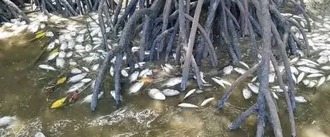
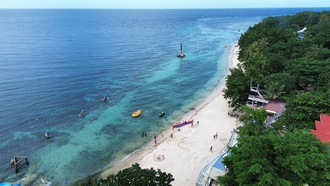
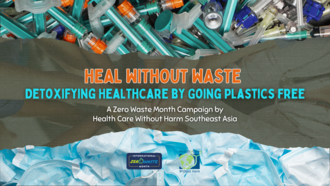
.png)
